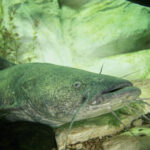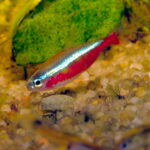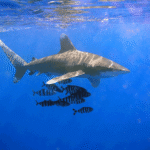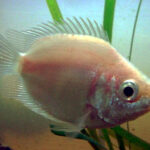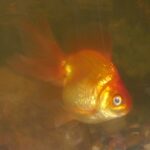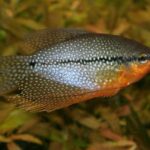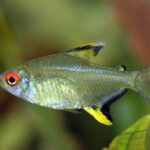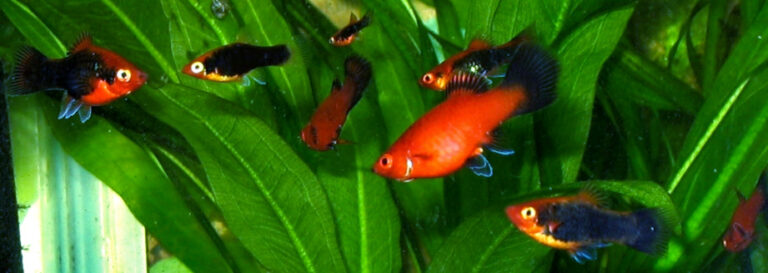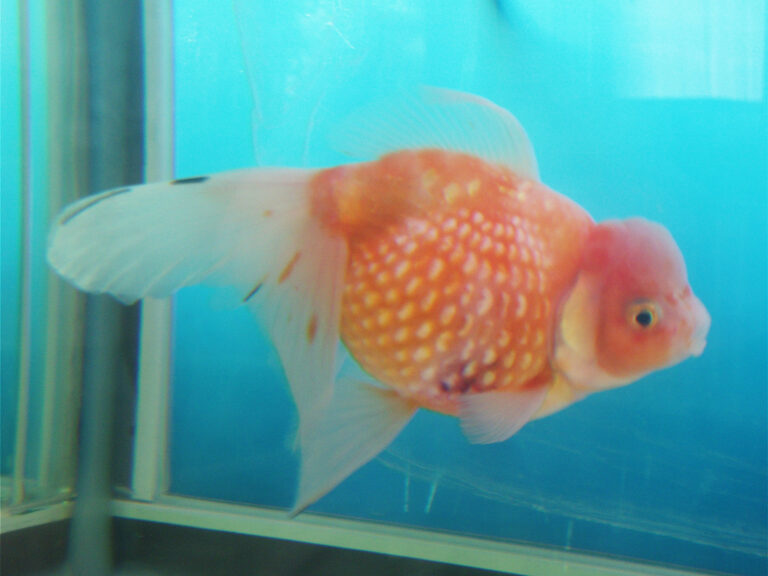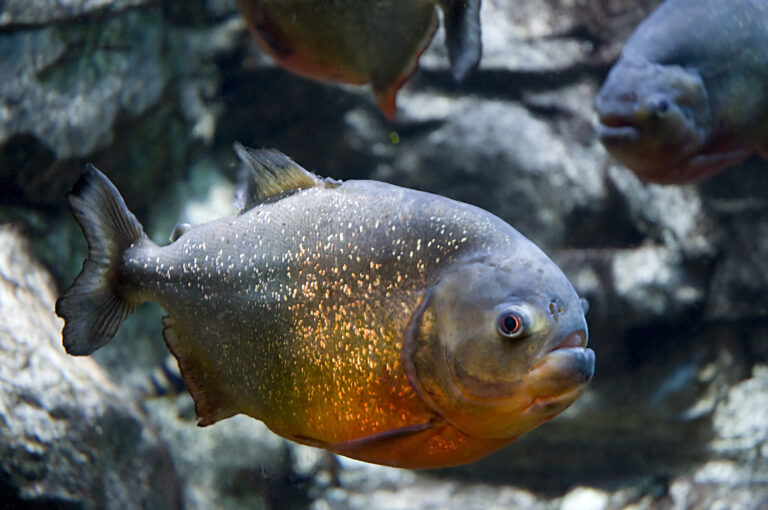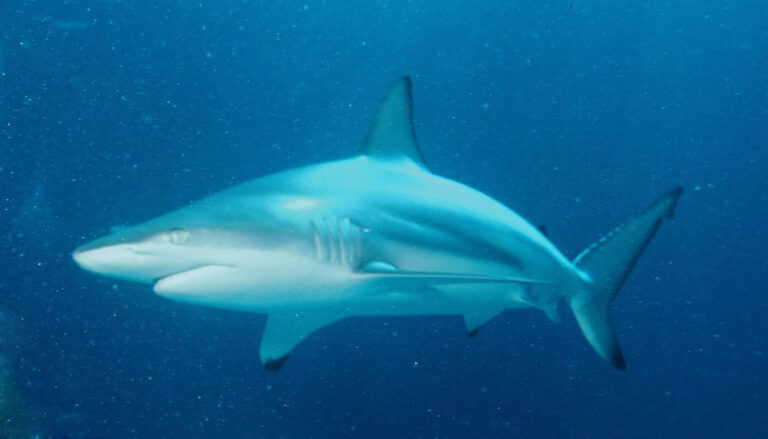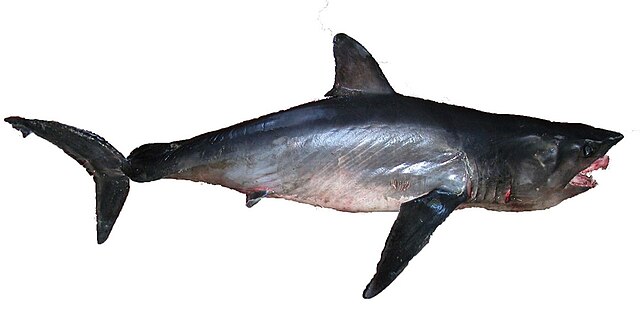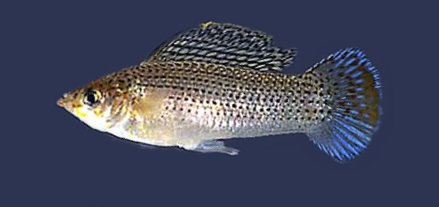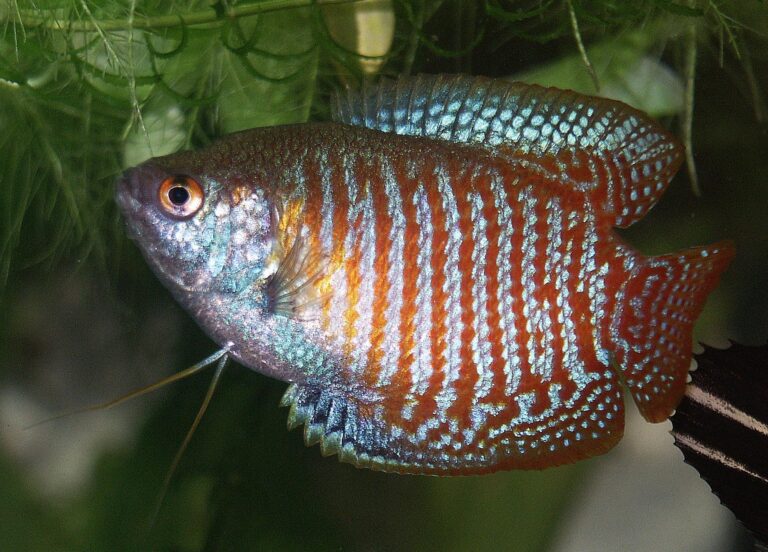Delta Tail Betta
By Ryan Maron | Last Modified: June 11, 2025

The Delta Tail Betta (Betta splendens) represents one of the most recognizable and sought-after varieties within the aquarium trade, distinguished by its dramatic triangular caudal fin that resembles the Greek letter delta. This selectively bred variant of the Siamese fighting fish showcases the remarkable genetic diversity that has emerged through decades of careful breeding programs. Beyond its ornamental value, the Delta Tail Betta serves as an important model organism for behavioral studies and represents a significant economic force within the global aquarium industry. These labyrinth fish play a crucial ecological role as both predator and prey in their native Southeast Asian waters, while their territorial nature and bubble-nesting behaviors make them fascinating subjects for ethological research.
| Feature | Details |
| Common Name | Delta Tail Betta |
| Scientific Name | Betta splendens |
| Family | Osphronemidae |
| Typical Size | 6-8 cm (2.5-3 inches), 2-4 grams |
| Habitat | Shallow freshwater environments |
| Diet | Carnivorous insectivore |
| Distribution | Southeast Asia (captive-bred globally) |
| Conservation Status | Vulnerable (wild populations) |
Taxonomy & Classification
The Delta Tail Betta belongs to the kingdom Animalia, phylum Chordata, class Actinopterygii, order Anabantiformes, family Osphronemidae, genus Betta, and species splendens. Within the Osphronemidae family, commonly known as gouramis, bettas represent a highly specialized group of labyrinth fish that have evolved sophisticated respiratory adaptations. The genus Betta encompasses over 70 recognized species, with Betta splendens serving as the most extensively studied and commercially bred representative.
The Delta Tail variety represents a phenotypic expression rather than a distinct subspecies, resulting from selective breeding programs that began in Thailand during the 19th century. Modern taxonomic classification recognizes several morphological variants within Betta splendens, including plakat, crown tail, halfmoon, and delta tail forms. These varieties demonstrate remarkable phenotypic plasticity while maintaining genetic compatibility and shared behavioral characteristics.
Phylogenetic analysis indicates that Betta splendens diverged from its closest relatives approximately 2-4 million years ago during the Pliocene epoch. The species shares common ancestry with other Betta complex members, including Betta imbellis and Betta smaragdina, with which it can produce viable hybrid offspring under laboratory conditions. Molecular genetic studies have identified key regulatory genes responsible for fin development and coloration patterns that distinguish the Delta Tail Betta from other variants.
Physical Description
The Delta Tail Betta exhibits distinctive morphological characteristics that separate it from other Betta splendens varieties, most notably its triangular caudal fin configuration. The tail fin extends at angles between 90 and 180 degrees, creating the characteristic delta shape that gives this variety its name. Males typically display more pronounced fin development, with caudal fins reaching 4-5 centimeters in length and spanning 6-7 centimeters at maximum extension.
Body coloration varies extensively among Delta Tail Bettas, ranging from solid hues to complex iridescent patterns. Common color variations include royal blue, steel blue, red, white, black, and multicolored combinations featuring metallic sheens. The scales possess specialized iridophores and chromatophores that produce brilliant reflective qualities under appropriate lighting conditions. Sexual dimorphism becomes apparent during maturity, with males developing more vibrant colors and elongated fins compared to females.
Anatomical features include a streamlined fusiform body measuring 6-8 centimeters in total length, with females typically smaller than males. The labyrinth organ, located above the gills, enables atmospheric breathing through a complex folded membrane structure. This specialized respiratory adaptation allows Delta Tail Bettas to survive in oxygen-depleted environments that would prove lethal to other fish species. The lateral line system extends along both sides of the body, providing enhanced sensory perception for detecting water movement and potential threats.
Habitat & Distribution
Wild Betta splendens populations inhabit the freshwater systems of Southeast Asia, including Thailand, Cambodia, Laos, and Vietnam. Natural habitats consist of shallow, slow-moving waters such as rice paddies, floodplains, canals, and tributary streams with temperatures ranging from 24-30°C (75-86°F). These environments typically feature dense aquatic vegetation, low dissolved oxygen levels, and seasonal fluctuations in water depth and chemistry.
Delta Tail Bettas demonstrate remarkable adaptability to diverse aquatic conditions, tolerating pH ranges from 6.0 to 8.0 and water hardness levels between 5-20 dGH. Natural substrate preferences include soft sediments with abundant organic matter supporting invertebrate populations. Vegetation density plays a crucial role in habitat selection, providing shelter, territorial boundaries, and spawning sites essential for reproductive success.
Commercial breeding operations have established populations worldwide, with major production centers in Thailand, Indonesia, Malaysia, and Vietnam. Captive breeding programs have largely replaced wild collection for the aquarium trade, reducing pressure on natural populations while enabling genetic selection for desired traits. Environmental parameters in breeding facilities closely replicate natural conditions, maintaining water temperatures between 26-28°C and providing adequate hiding places through live or artificial plants.
Diet & Feeding Behavior
Delta Tail Bettas are obligate carnivores with feeding behaviors adapted for capturing small invertebrate prey in their natural environment. Primary food sources include mosquito larvae, bloodworms, water fleas, small crustaceans, and various aquatic insects that inhabit shallow freshwater systems. Their upturned mouth configuration facilitates surface feeding, allowing efficient capture of prey items floating at the water’s surface or suspended in the upper water column.
Hunting strategies involve both active predation and opportunistic feeding patterns depending on prey availability and environmental conditions. Delta Tail Bettas exhibit remarkable visual acuity, detecting minute movements from potential prey items at distances exceeding 10 centimeters. Feeding frequency in natural habitats varies seasonally, with increased activity during monsoon periods when insect populations reach peak abundance.
Digestive physiology reflects their carnivorous specialization, featuring a relatively short intestinal tract and acidic stomach environment optimized for protein breakdown. Metabolic requirements include high-quality protein sources comprising 35-40% of their dietary intake, supplemented by essential fatty acids and micronutrients. Captive feeding protocols typically involve multiple small meals throughout the day, mimicking natural feeding patterns while preventing overfeeding complications common in aquarium environments.
Behavior & Adaptations
Territorial aggression represents the most distinctive behavioral characteristic of Delta Tail Bettas, particularly among mature males during breeding season. Aggressive displays include fin flaring, gill cover extension, body undulation, and direct physical confrontation when territorial boundaries are challenged. Territory size varies based on environmental factors and population density, typically encompassing 30-50 square centimeters in natural habitats with established boundaries marked through visual displays and pheromone release.
The labyrinth organ adaptation enables survival in oxygen-depleted environments through atmospheric breathing, a crucial advantage in their native shallow water habitats. This physiological specialization allows Delta Tail Bettas to inhabit areas unsuitable for other fish species, reducing interspecific competition while expanding available ecological niches. Breathing behavior involves regular surface visits, with frequency increasing in response to reduced dissolved oxygen levels or elevated water temperatures.
Social behavior patterns include complex dominance hierarchies among males and relatively peaceful interactions between females. Stress responses manifest through color changes, reduced activity levels, and altered feeding behaviors when environmental conditions become suboptimal. Cognitive abilities demonstrated in laboratory settings include spatial memory, pattern recognition, and conditioned response learning, indicating higher neurological complexity than previously recognized in small freshwater fish species.
Reproduction & Life Cycle
Delta Tail Betta reproduction involves elaborate courtship rituals and parental care behaviors unique among freshwater fish species. Males construct bubble nests at the water surface using saliva-coated air bubbles, creating floating platforms measuring 5-10 centimeters in diameter. Nest construction typically occurs in areas with minimal water movement, often beneath broad-leaved plants or other surface cover that provides protection from environmental disturbances.
Courtship behavior includes intricate displays featuring fin spreading, body coloration intensification, and rhythmic swimming patterns designed to attract receptive females. Successful mating involves the male wrapping around the female in a spawning embrace, during which 10-40 eggs are released and immediately fertilized. The male collects fertilized eggs in his mouth and deposits them individually into the bubble nest, where they remain under his exclusive care and protection.
Incubation period ranges from 24-36 hours depending on water temperature, with optimal hatching occurring at 27-28°C. Newly hatched fry remain attached to the bubble nest for 2-3 days while absorbing their yolk sacs, during which the male continues providing protection and nest maintenance. Sexual maturity occurs at 3-4 months of age, with a complete life cycle spanning 2-3 years under optimal conditions. Reproductive success depends heavily on environmental stability, adequate nutrition, and minimal stress factors during the critical spawning period.
Predators & Threats
Natural predators of Delta Tail Bettas include larger fish species, aquatic birds, snakes, and invertebrate predators that inhabit shared freshwater ecosystems. Juvenile bettas face particularly high predation pressure from species such as snakeheads, catfish, and larger cyprinids that can easily consume small fry and sub-adult individuals. Adult bettas utilize their aggressive nature and territorial behavior as primary defense mechanisms against potential predators.
Habitat destruction represents the most significant threat to wild betta populations, with urban development, agricultural expansion, and water pollution systematically eliminating natural breeding sites. Rice paddy modernization has reduced suitable habitat availability, while industrial contamination introduces toxic compounds that compromise reproductive success and survival rates. Climate change impacts include altered precipitation patterns and temperature fluctuations that disrupt traditional breeding cycles.
Disease susceptibility increases under stress conditions, with common ailments including fungal infections, bacterial diseases, and parasitic infestations. Fin rot, ich, and columnaris represent frequent health challenges in both wild and captive populations. Poor water quality, overcrowding, and inadequate nutrition contribute to increased disease prevalence and reduced immune system effectiveness. Genetic bottlenecks in commercial breeding lines may compromise long-term population viability through reduced genetic diversity and increased inbreeding depression.
Conservation Status
The IUCN Red List currently classifies wild Betta splendens populations as Vulnerable due to ongoing habitat loss and environmental degradation throughout their native range. Population assessments indicate significant declines in natural breeding sites, with some regional populations experiencing local extinctions due to urban development and agricultural intensification. Conservation efforts focus on habitat preservation, water quality improvement, and sustainable breeding practices.
Captive breeding programs have successfully maintained genetic diversity while reducing collection pressure on wild populations, though concerns remain regarding the genetic integrity of commercial breeding lines. International trade regulations under CITES provide limited protection, as most commercially available bettas originate from established breeding facilities rather than wild collection. Conservation strategies emphasize ecosystem preservation rather than species-specific interventions.
Research initiatives supported by organizations such as the Betta Fish Conservation Society focus on documenting wild populations, identifying critical habitats, and developing breeding protocols for genetic conservation. Educational programs promote awareness of native betta species diversity and encourage responsible aquarium keeping practices that reduce environmental impacts. Collaborative efforts between government agencies, conservation organizations, and commercial breeders aim to balance economic interests with long-term species preservation goals.
Human Interaction
The relationship between humans and Delta Tail Bettas spans over 150 years, beginning with traditional Thai fighting fish culture and evolving into a global aquarium industry worth hundreds of millions of dollars annually. Historical significance includes their use in gambling activities and status symbols among Thai nobility, leading to selective breeding programs that produced the diverse varieties available today. Modern aquarium keeping practices emphasize aesthetic appreciation rather than fighting behaviors.
Commercial breeding operations employ sophisticated techniques including selective breeding, genetic management, and controlled environmental conditions to produce high-quality specimens for international export. Major breeding facilities in Southeast Asia utilize advanced filtration systems, climate control, and feeding protocols to maximize production efficiency while maintaining fish health and genetic diversity. Quality standards include specific criteria for fin shape, color intensity, and behavioral characteristics that determine market value.
Educational applications include their use in classroom settings for teaching concepts related to genetics, animal behavior, and aquatic ecology. Research applications encompass studies of aggression, learning, memory, and environmental adaptation that contribute to broader understanding of fish cognition and behavior. Therapeutic uses include their incorporation into animal-assisted therapy programs, where their calm presence and minimal care requirements provide psychological benefits for patients in healthcare settings.
Interesting Facts
Delta Tail Bettas possess remarkable jumping abilities, capable of leaping up to 7.5 centimeters above the water surface to capture terrestrial insects or escape predators. This behavior necessitates secure aquarium covers in captive environments to prevent accidental escapes. Their jumping precision allows them to target specific prey items with remarkable accuracy, demonstrating sophisticated motor control and spatial awareness.
Color-changing abilities enable Delta Tail Bettas to alter their appearance based on mood, environmental conditions, and social interactions. Stress-induced color changes can occur within minutes, while gradual adaptations to lighting conditions may take several days to complete. Specialized cells called chromatophores contain different pigment types that can be concentrated or dispersed to create various color combinations and intensities.
Memory retention studies have demonstrated that Delta Tail Bettas can remember feeding schedules, recognize individual humans, and learn to navigate complex maze configurations. Long-term memory capabilities extend up to three months, challenging previous assumptions about cognitive limitations in small fish species. Some individuals exhibit learned behaviors that suggest problem-solving abilities comparable to higher vertebrates.
Temperature sensitivity allows Delta Tail Bettas to detect water temperature changes as small as 0.5°C, enabling them to locate optimal thermal zones within their environment. This adaptation proves crucial for metabolic regulation, reproductive timing, and energy conservation in their native tropical habitats where temperature variations can significantly impact survival and breeding success.
Frequently Asked Questions
How long do Delta Tail Bettas typically live?
Delta Tail Bettas generally live 2-3 years under optimal conditions, though some exceptional individuals may reach 4-5 years with excellent care. Lifespan depends on genetic factors, water quality, diet, stress levels, and overall health management. Proper aquarium maintenance, consistent feeding schedules, and disease prevention significantly contribute to longevity in captive environments.
Can Delta Tail Bettas be kept with other fish species?
Delta Tail Bettas can coexist with carefully selected tank mates that are non-aggressive, appropriately sized, and do not possess long fins that might trigger territorial responses. Compatible species include small tetras, corydoras catfish, and certain rasbora species. Tank size, hiding places, and careful monitoring are essential for successful community aquarium setups involving bettas.
What water conditions are ideal for Delta Tail Bettas?
Optimal water parameters include temperatures between 24-28°C (75-82°F), pH levels of 6.5-7.5, and moderate hardness levels. Regular water changes, adequate filtration, and stable environmental conditions are crucial for maintaining health and preventing stress-related diseases. Water quality testing should be performed weekly to ensure optimal conditions are maintained consistently.
Do Delta Tail Bettas require special dietary considerations?
Delta Tail Bettas require high-protein diets consisting primarily of small invertebrates or high-quality commercial foods formulated for carnivorous fish. Variety in diet prevents nutritional deficiencies, with options including bloodworms, brine shrimp, daphnia, and specially formulated betta pellets. Feeding frequency should involve small portions 2-3 times daily rather than single large meals to optimize digestion and prevent obesity.
Conclusion
The Delta Tail Betta represents a remarkable example of selective breeding success within the aquarium industry while highlighting the importance of conserving wild betta populations and their natural habitats. Their complex behaviors, stunning appearance, and adaptability make them valuable both as companion animals and research subjects, contributing to our understanding of fish cognition and evolutionary biology. As human interaction with these fascinating creatures continues to evolve, balancing commercial interests with conservation needs remains essential for ensuring the long-term survival of both captive varieties and their wild counterparts in Southeast Asian freshwater ecosystems.
Share The Article:
More Fish Species:
-
Wagtail Platy
The Wagtail Platy stands as one of the most distinctive and beloved freshwater aquarium fish, renowned for its elegant…
-
Pearlscale Goldfish
The Pearlscale Goldfish represents one of the most distinctive and captivating varieties of ornamental carp, distinguished by its characteristic…
-
Pleco
The **Pleco**, scientifically known as *Pterygoplichthys multiradiatus* (common pleco), represents one of the most recognizable and ecologically significant groups…
-
Red Belly Piranha
The Red Belly Piranha (*Pygocentrus nattereri*) stands as one of South America’s most misunderstood freshwater predators, wielding razor-sharp teeth…
-
Blacktip Shark
The Blacktip Shark (Carcharhinus limbatus) stands as one of the most recognizable and ecologically significant predators in tropical and…
-
Longfin Mako Shark
The Longfin Mako Shark represents one of nature’s most enigmatic and misunderstood predators, embodying both the raw power and…
Discover
-
Basking Shark
The Basking Shark stands as one of the ocean’s most magnificent gentle giants, representing the second-largest fish species on…
-
Alaska Salmon Fishing: Planning Your Trip to the Last Frontier
I still remember the first time I hooked into a Kenai River king salmon. It was July 15, 2019,…
-
Michigan Fishing License 2025: Complete Cost & Requirements Guide
Ask any angler about the most frustrating part of fishing, and paperwork will likely rank right up there with…
-
Texas Saltwater Fishing: Essential Tips From Adam
It was June 2010, and man was I cocky heading into that first Texas saltwater trip. Drove down from…
-
Night Fishing for Beginners: Expert Techniques That Actually Work
My first night fishing trip was an absolute disaster. Picture this – fifteen-year-old me, armed with a rusty flashlight…
-
East Coast Surf Fishing: Targeting Striped Bass and Bluefish from Shore
When I first tried East Coast surf fishing nearly 15 years ago, I was absolutely terrible at it. I…
Discover
-
Ice Fishing Techniques for Anglers in 2025
Last January, I was out on Higgins Lake during that brutal cold snap – you remember, when it dropped…
-
Black Molly
The Black Molly represents one of the most recognizable and enduring species in the freshwater aquarium trade, captivating both…
-
Dwarf Gourami
The Dwarf Gourami (Trichogaster lalius) stands as one of the most popular freshwater aquarium fish species, renowned for its…
-
Best Fishing Spots in California: Lakes, Rivers, and Coastal Hotspots
California fishing has always struck me as a study in beautiful contradictions. From snow-fed alpine lakes to sweltering desert…
-
North Jersey Fishing Guide: Best Lakes, Rivers & Seasons
If you’ve never experienced the fishing in North Jersey, you’re missing out on some genuinely underrated angling opportunities. From…
-
Sunset Platy
The Sunset Platy (Xiphophorus maculatus), commonly known as the Southern Platyfish, represents one of the most popular and recognizable…

